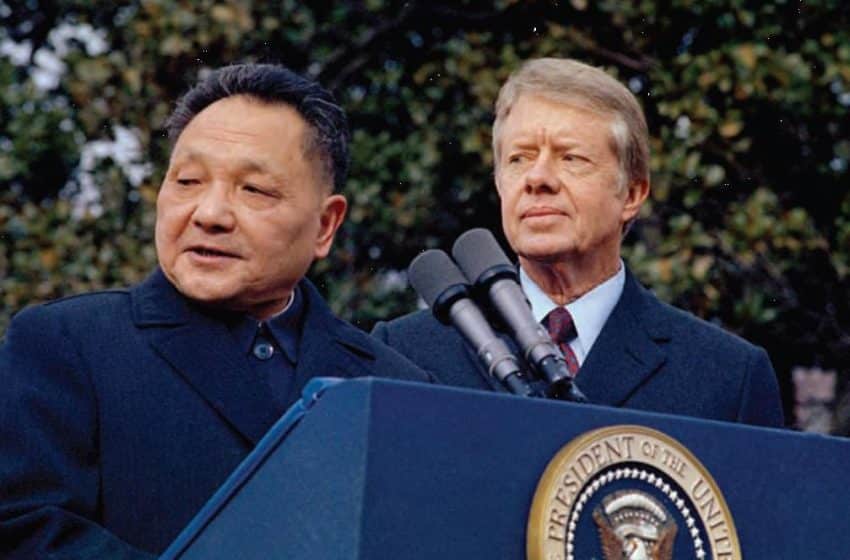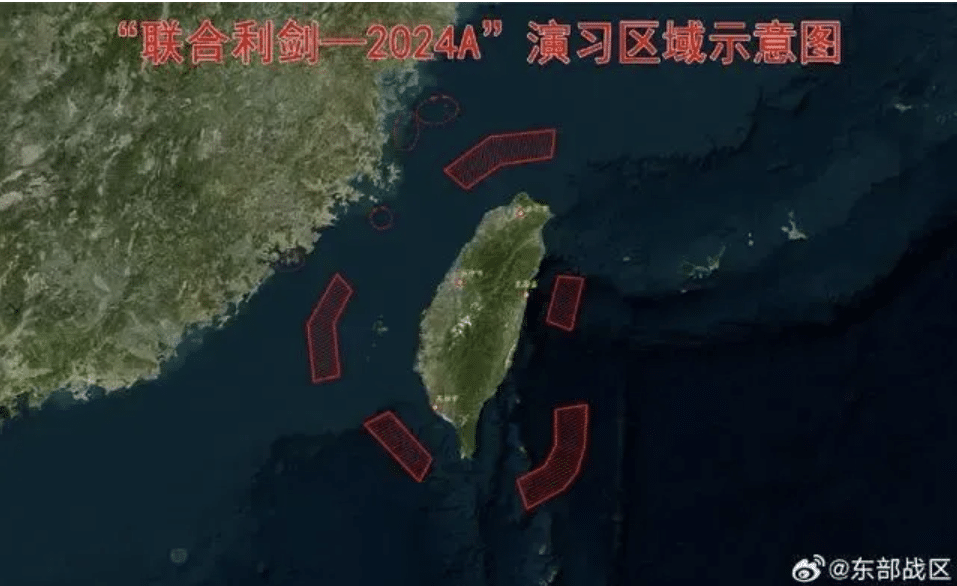Jia Qingguo: A China-US Cold War Draws Near
- Analysis
 USCNPM Staff
USCNPM Staff- 09/07/2022
- 0
This translation is the transcript of a speech given by Professor Jia Qingguo on July 9, 2022. Since Speaker Pelosi’’s visit to Taiwan on August 2, 2022, the U.S.-China relationship has deteriorated further. Some of the more recent, positive interactions between Washington and Beijing mentioned by Professor Jia have evaporated in the wake of China’s retaliation against the Speaker Pelosi’s visit.
The Chinese-language version of this speech can be found here. An archived version can be found here.
Under the influence of the recent conflict between Russia and Ukraine, Pelosi’s visit to Taiwan, and other factors, it will be difficult for China-U.S. relations to improve. They even continue to deteriorate. At this point in time, how should we assess the current state of China-U.S. relations? What will be the future course of the bilateral relations? Will the world descend into a new Cold War?
Jia Qingguo, a member of the Standing Committee of the Chinese People’s Political Consultative Conference (CPPCC), Professor of the School of International Studies at Peking University and Director of the Center for Global Understanding and Cooperation, responded to the above questions. Competition and confrontation are still the main threads of the current China-U.S. relations, and the future prospects are not optimistic. For the world, the Cold War does not seem too far away.
How to assess the current state of China-US relations? At the beginning of Biden’s administration, U.S. Secretary of State Antony Blinken summed up Sino-U.S. relations as follows: competition, confrontation, and cooperation. But so far, competition and confrontation have dominated the bilateral relationship, and cooperation, if any, has been very limited.
In the area of the economy, the Biden administration has not lifted the import tariffs imposed on China during the Trump administration and has strengthened export restrictions on some high-tech products to China, namely the so-called ‘small yard, high fence’ policy. Bilateral economic and trade relations, especially scientific and technological relations, are still facing great pressure from domestic politics to decouple. Pressure to decouple is not limited to the United States, but also to China. Decoupling on the China-side will become a reality once China succeeds in closing deficiencies in the economy, science, and technology.
Politically, the conflict between the two countries has further intensified. Against the background of the U.S. constantly criticizing China on issues such as Xinjiang, the South China Sea, Taiwan, and the Belt and Road Initiative, China’s counterattack is increasing. Not long ago, the Ministry of Foreign Affairs issued a statement on the fallacies and facts in U.S. perceptions of China, which were harshly critical of the U.S., showing that it no longer has any expectations for the improvement of China-U.S. relations.
Militarily, the two countries are constantly rubbing up against each other, and their close encounters in the South China Sea and the Taiwan Strait are increasing, raising the possibility of accidental military conflicts. Against this backdrop, the two militaries simultaneously regard each other as their main adversary, something that has not happened in decades.
Diplomatically, the U.S. has actively sought to cooperate with its allies to increase its containment of China, including cobbling together the so-called ‘AUKUS’ partnership, strengthening security cooperation of the QUAD which includes the U.S., Japan, India and Australia, and introducing the Indo-Pacific Economic Framework for Prosperity. In response, China also began to launch a diplomatic offensive, including explicitly demanding neighboring countries not to “choose sides”, easing and improving relations with countries such as South Korea and India, and strengthening relations with countries in the South Pacific.
Moreover, the interaction between the two countries has been extremely negative with acrimonious criticism of the other side and increasing difficulty in communication. Each side assumes the worst of the other’s intentions. When each side tries to send signals of goodwill, it feels obligated to blame the other side for causing all the earlier problems. In this atmosphere, both sides are blind to attempts to improve the relationship.
At the same time, the domestic public opinion of U.S.-China relations has weakened sharply. According to a survey conducted by the Pew Research Center on April 28, negative views of China among Americans reached a new high of 82%, a level not seen in many years. Public opinion of the United States has also deteriorated sharply in China, with 58% of Chinese having a favorable view of the United States in a 2010 Evaluation Research Center poll, and only 40% in 2021. The recent outbreak of the Russia-Ukraine conflict has further aggravated Sino-U.S. relations. It has intensified distrust between the two countries. Washington claims it has provided Beijing with intelligence on Russia’s invasion plans, but [that China] chose to forward it to Moscow.
Furthermore, the war has increased disagreement between China and the U.S. over international rules, such as whether one country has the right to encourage a part of residents in another country to secede from the country they live in through a referendum on any pretext. The two countries used to at least pay lip service to the idea that they had no such right to do so, but now the U.S. believes that China no longer holds the same view, even though China does not agree with the U.S. The second question is whether a country has the right to use force to resolve territorial disputes between countries. In the past, both countries thought that they did not. Now the U.S. thinks that China has changed its approach, at least in the case of Russia and Ukraine, although China does not think so.
Finally, it increases the possibility of a full-scale confrontation between the two countries. Although China is not helping Russia attack Ukraine, the U.S. tends to believe that China is doing so. As a result, the normal economic and trade relations between China and Russia in the future may also be accused by the U.S. of supporting Russia’s invasion of Ukraine. According to recent reports, China-Russia economic and trade cooperation has bucked the trend and increased by 28.9% in the first five months of 2022. Against this backdrop, if the U.S. believes that China is supporting Russia in its fight against Ukraine, it will certainly have a huge impact on China-U.S. relations.
Of course, it is not all bad news for bilateral relations. First, bilateral economic and trade relations are still expanding, and the total volume is still increasing. The Biden administration is also actively considering lifting Trump-era tariffs against China. Second, the two countries are still cooperating on some global governance issues, such as the climate issue, the fight against the epidemic and the fight against international drug trafficking. The cooperation in safeguarding the international economy is expected to gradually expand. Third, the two presidents are still maintaining a polite online engagement and have reached a consensus on the need to take measures to avoid accidental military conflicts in China-U.S. relations. Fourth, senior officials of the two governments have also resumed dialogue, and the frequency is increasing.
In short, relations between the two countries continue to be tense and there is still contact and sporadic dialogue. Recently, relations between the two countries have shown signs of developing in a rational and pragmatic direction. However, whether the relations between the two countries can be stabilized and improved needs further observation.
Will there be a Cold War between China and the United States in the future? My judgement from a few years ago now seems too optimistic. I thought not, why not? There was only one Cold War in history, and that was the Cold War between the U.S. and the Soviet Union. That Cold War had three characteristics: there was an all-out ideological confrontation and competition, a full-scale military confrontation and stifling economic isolation. There is no all-out ideological confrontation between China and the U.S. What China stands for is socialism with Chinese characteristics and it adheres to the principle that each country should determine its own development path in light of its own national conditions. China is not saying that all countries need to be like China, nor is it saying that China’s development path is diametrically opposed to that of the U.S., so there is no full ideological competition yet. Militarily, there is not yet all-out confrontation, only some frictions in the South China Sea and the Taiwan Strait. And there is certainly no economic isolation because the harm caused by such isolation to both sides is too great to bear. But things often can go way beyond what people think.
A few years later, with Trump gone and Biden in, Sino-U.S. relations have deteriorated rather than improved. The current Sino-U.S. interaction can be described as follows: ideological competition is gradually forming, military confrontation is emerging, and economic relations are still close, but the growth momentum has slowed down and the trend of high-tech decoupling and partial economic disconnection has taken shape. The Cold War is not quite here yet, but it does not seem too far away.







